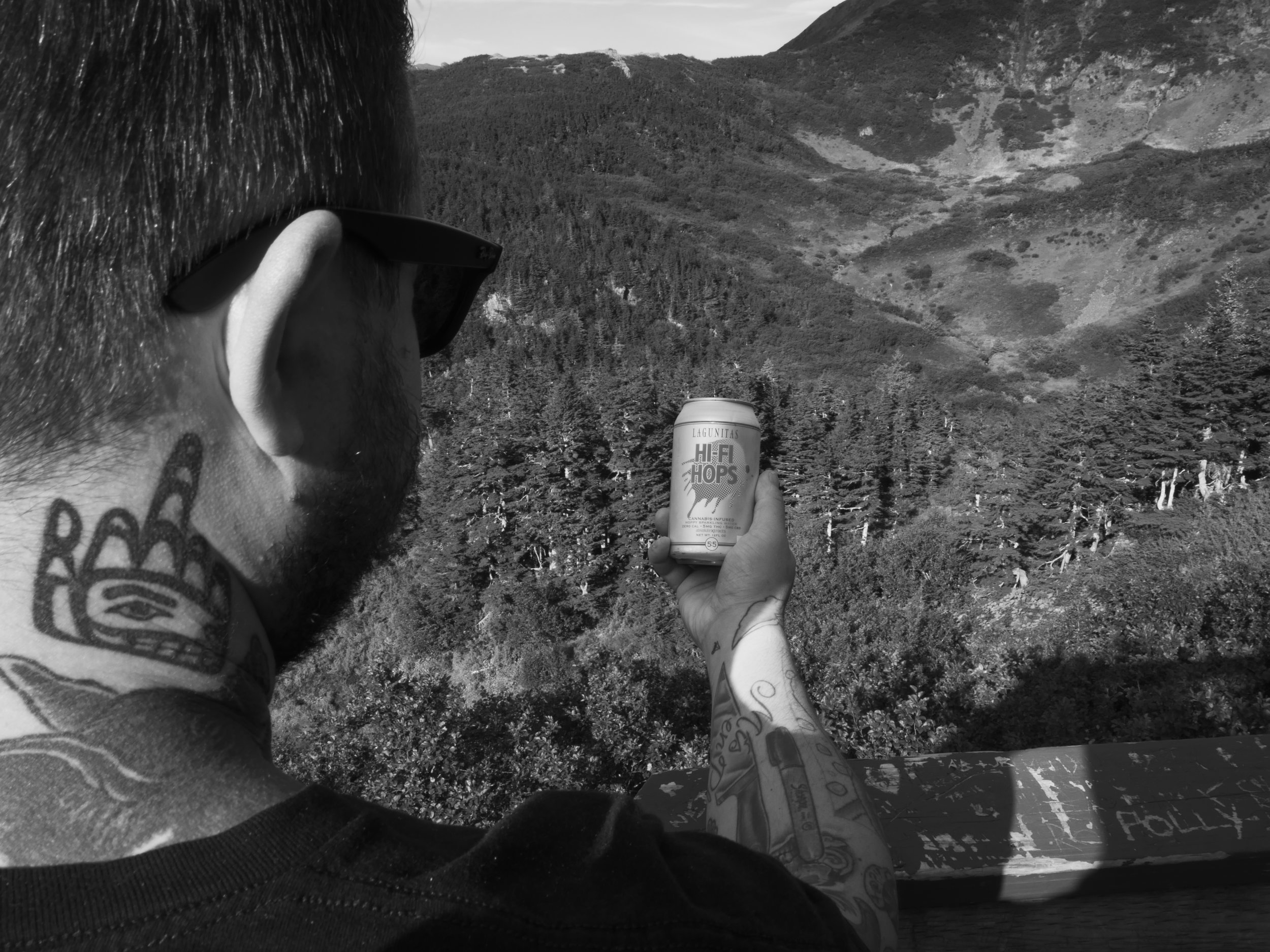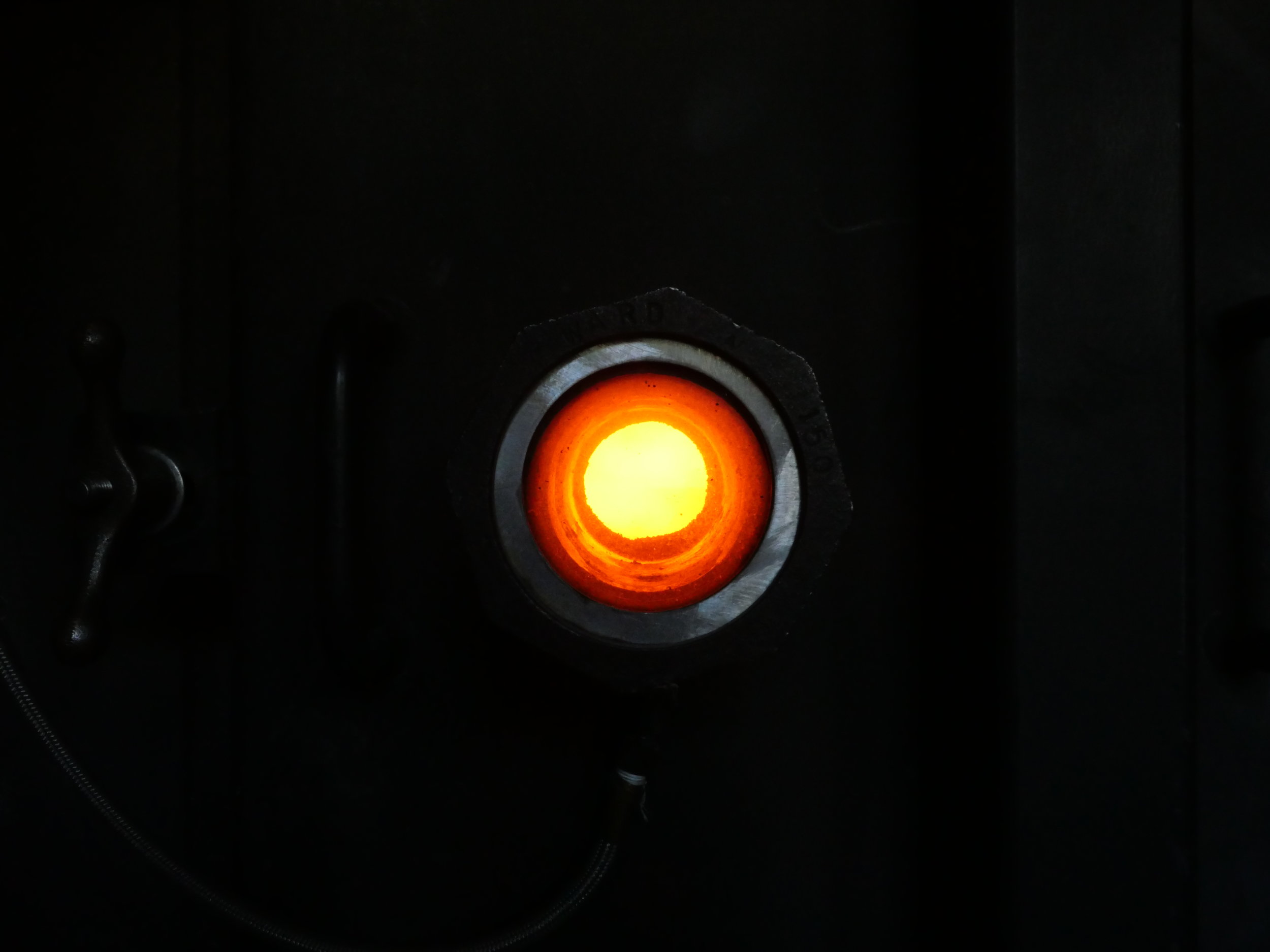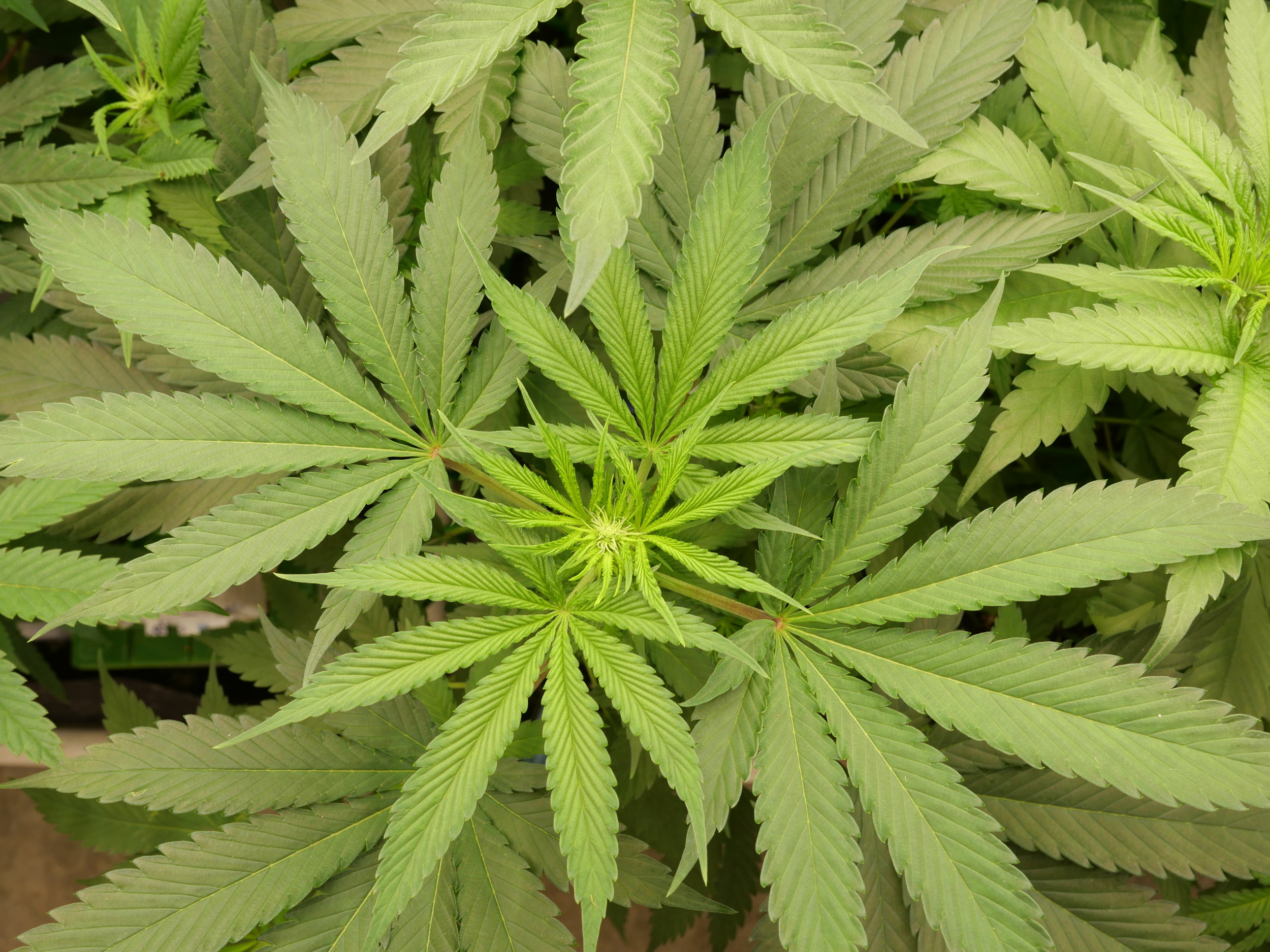The air is the first thing I notice. It’s crisp, clean, fresh, and carries all of the possibilities of the Alaskan wilderness on its breeze.
Towering trees, clean water, endless fresh fish, bears, and humans living together on the edge of the world, surrounded by the bounty of the wild. I pull my bag from the carousel, heavy with beer from California, and lug it past security and through the automatic doors. Outside the sky is a perfect blue, and chef Beau Schooler is waiting for me.
I’ve come to Juneau in search of what everyone comes to Alaska for: the outdoors, the nature, to get away, to hide from home, and in search of flavors and inspiration. I’ve brought the bag of beer for pairings, loaded up with the maximum capacity that Alaska Airlines will allow. I deposit my 50-pound luggage on the backseat of Beau’s beat-up Subaru, and we head into town.
Beau hates being called “chef,” and tells me to fuck off every time I do. That’s typical for him: gruff, slightly rude, an unpolished work in progress. He’s also one of the most talented cooks I’ve ever met, overflowing with ideas, possibilities, and technique. He’s the kind of chef that Anthony Bourdain loved to spend time with: obsessed with perfection, slightly rejected from mainstream society, painted in tattoos and burn scars and attitude.
It’s clear as a bell as we drive into town. Beau squints at the sky and suggests that this is as good as the weather will get (as in San Francisco, the weather in Juneau is constantly on the edge of collapse, with overcast skies and rain never more than a breeze away). Per his advice, we head downtown to Mount Roberts. A five-minute tram ride hauls us 1,800 feet up the side of the mountain, over trees and past bald eagles and unseen bears. After disembarking, we head up the trails, warm with sweat. Luckily, I brought refreshments to pair with all the sunshine and exercise.
At a clear vista, I produce a can of Lagunitas’ Hi-Fi Hops: the brewery’s new cannabis- and hop-infused sparkling water. It contains no alcohol, and instead features 5mg of THC and 5mg of CBD, plus hops for flavor.
A quick primer: cannabis, a close cousin of hops, contains both THC (which gets you high) and CBD (which has a more therapeutic effect), as well as other compounds. CBD and THC tend to be more effective together than apart.
This particular can’s 5mg dose of each compound would be considered small for all but the most sensitive partakers. It’s a perfect pairing for the top of Mount Roberts: the high is light, energetic, and clear as the skies above. The aroma, too, is surprisingly great: reminiscent of a hazy IPA, it smells like peach gummy rings, fruity hops, and stone-fruit skin. The taste is slightly sweet, with a hint of herbaceousness and a clean finish. Unlike the marijuana-infused edibles of my college years, here the flavors of the cannabis shine deliciously through instead of being covered up.
Plus, Hi-Fi Hops has the advantage of being completely legal in libertarian-leaning Alaska: marijuana has been permitted for adult recreational use here since 2014. The CBD’s anti-inflammatory features kick in shortly thereafter, and my knees hurt just a little less as we climb higher into the Alaskan sky.
You can see on the approach to Alaskan Brewing Co. that its appearance is, well, unusual. Rows of giant, stainless-steel tanks peek above low-slung buildings, all snuggled in a manufacturing area between two mountains and shadowed by a retreating glacier. A charred, black smokestack sticks out among the clean tanks.
Making beer on what’s functionally an island presents unique challenges. In most places in the world, spent grain is hauled off by local farmers, easily and cheaply solving a trash problem for the brewery. That’s not possible here: there is almost no livestock in Juneau, and nowhere near enough farmers to take this industrial supply of spent grain away. The old solution was to dry the husks, and then ship them back to the Seattle area for cattle there. But a brewery upgrade a few years ago changed all that.
Now, deep in the heart of Alaskan Brewing, a fire burns. Spent grain is dried in a giant, gray tumbler out back, before being fed into a furnace. My tour guides open a heavy, fireproof door to a room more than a few degrees warmer than the surrounding areas. Inside, the equipment looks like it belongs on a coal-powered train rather than in a modern brewery. There’s a giant, central black box with a single circular port peering inside, where the spent grain burns dangerously, red hot. Dried grain is fed through a carburetor-style fan system, and mixes with the right amount of oxygen for combustion.
Every ounce of efficiency helps makes operating a brewery out here easier: grain feeds the yeast, feeds the fire, and powers the brewery. Farther down in the system, CO2 is reclaimed from fermentation, which gives the brewery one more thing it can source internally instead of shipping in from the mainland.
Alaskan Brewing was founded back in 1986, and rode the ’90s craft beer boom to great effect. Today, Alaskan Amber still accounts for more than 50% of its production, but beers like its West Coast IPA and a (maybe reluctantly made) Hazy IPA add to its range. The brewery has another modern classic in its portfolio: Alaskan Smoked Porter. A favorite of mine, the limited-edition beer is brewed with locally smoked malt, originally made using smokers at Taku Fisheries’ smoking services. Now, the malt is produced in-house with the same smokers that were discarded by the growing salmon-smoking operation.
American Porters may have been pushed out of fashion by trendy barrel-aged and adjunct Stouts, but I still adore this beer. It’s jet-black, all dark-roasted malt, with notes of char, coffee, and, of course, smoke, which is prominent but doesn’t overwhelm the other flavors. Pair Alaskan Smoked Porter with campfire s’mores—its higher ABV is perfect for staying warm around a fire, and it’s good to drink while making fun of your friend for lighting their marshmallow on fire. It’s a beer that captures some of Alaskan Brewing’s ingenuity and gumption, packages it up, and ships it all over the country. Somewhere under the smoke and malt is the fire at the heart of this “beer-powered brewery.”
My introduction to The Fireweed Factory starts with climbing into a white, laboratory coverall, plus blue booties for my shoes and latex gloves over my hands. The cannabis growers, housed in an anonymous, blue-roofed warehouse in Juneau, are worried about infections or bugs being introduced into their crop.
Inside the main facility, a series of smaller rooms takes me through the growing, cultivating, harvesting, and packaging processes. In the grow room, green, glowing leaves are completely soaked in light, while my hosts, Brent and Paul Disdier, beam brighter than the LEDs. They’re proud, and rightly so: the room is overflowing with chest-high plants, most sparkling with reflective crystals. The two men circle around the plants, pointing out the different temperaments of each strain, criticizing them like slightly overbearing parents.
Cannabis plants, like hops, come in male and female varieties, and can easily be bred together to create new genetic strains. Yesterday’s favorite strains are the building blocks for tomorrow’s next hits. The results are a mix of luck, technique, and taste. Plants are cut, trimmed, and grown before matriculating into the space next door: the flowering room.
It’s jam-packed with three tiers of plants, which are lit with strips of LED lights from all sides. They resemble sparkling snow castles, glistening with small, white crystals like cannabis frosting. Each strain looks slightly different: one is purple with white edges, another bright green with yellow highlights. The majority of the strains are tinged a deep, sunset purple, an effect of breeding and selection.
The Fireweed Factory is a small operation, and almost everyone I meet is a part of the Disdier family. Mom and Dad—June Hall and Paul Disdier Sr.—run business operations, while sons Paul and Jimmy do most of the growing. After Alaska legalized cannabis in 2014, Fireweed Factory became the first legally licensed grow operation in Juneau when it opened in 2016. With that single slip of paper, Paul’s years of illegal growing practice suddenly became a valuable skill, and the new family business was born. Like Alaskan Brewing, the Disdiers are quietly making utterly delicious products while perched on the edge of civilization, steps from the Alaskan wilderness.
Sadly, sampling on site is strictly prohibited, so I’m sent to make my purchases at Fireweed’s storefront in downtown Juneau.
It’s a small store, and Paul Sr., the patriarch of this green family, is checking IDs at the door. Inside the walls are lined with close-up pictures of each strain, plus tasting notes. Small jars with tiny trap lids let you smell the products.
Tastes run decidedly toward the Indica branches, although there are a few Sativas available. (For the uninitiated: there are two major families in cannabis, Indica and Sativa. Indicas are—very broadly generalizing for the sake of simplicity—known for sleepy, nighttime effects. Sativas are more “daytime,” with their creative, energetic, and cerebral highs.) These days everything is bred together, much like hops. Both varieties have medical applications for fighting cancer, pain relief, anti-inflammation, and treating seizures.
Beyond that, it’s good weed! My favorite, and one of Fireweed’s most popular offerings, is Chilkat Cherries, a house-grown Indica-Sativa hybrid, leaning heavily on the Indica side of things. Buds are big, purple nugs with yellow and white tendrils, covered in crystals that resemble fresh Alaskan snow. The taste is fruity, with definite cherry and marzipan notes. The effect is delightful: a euphoric Indica body high, followed up by evening couch-lock.
Another flavor-forward option is Douglas Chocolate Cake: an Indica strain with a distinct cocoa aroma with a bit of raw cake batter flavor in the background. Its effect is perfect for a good evening’s sleep.
Like beer, great cannabis can be produced anywhere—the basic ingredients are stable and available, so technique and process are what’s needed to create something really special. In this anonymous warehouse outside the Juneau Airport, the Disdier brothers are growing something truly exceptional, and uniquely Alaskan.
The appeal of a few hits followed by a hike is well known locally, and the gentle dazed-and-glazed effect of Fireweed’s purple strains pairs well with the Alaskan wilderness. My favorite route is the Plume Trail, which winds from the back hillside of downtown along a river and past an old mining operation. The flavors and feel of the cannabis high are a match for the beauty and wildness found just outside of town.
But I can’t wander around all evening: I’ve got to get back to downtown, to Beau’s restaurant. Chef—“Fuck off!”—is cooking up something special.
We’re sitting outside at dusk, on the patio of Beau’s restaurant In Bocca al Lupo (translation: “In the Wolf’s Mouth,” or “Good Luck!”). We’re just finishing up a pizza that was covered in onions and house-made salmon sausage. He prepares the sausage by grinding local salmon with pork fat and a traditional spice blend. It’s a typical Beau dish: a blend of local Alaskan and traditional Italian fare, cooked right to the edge in a wood-fired oven. The pizza comes out blistered, hot, and delicious.
Beau approaches the table clutching a large, cast-iron skillet, a blackened fish tail poking out of one side. Inside is a new dish he’s been working on: fire-roasted salmon “offcuts,” the parts fishermen used to trash or keep for themselves while selling off the high-demand fillets. Inside is that crispy tail, a fatty salmon belly, and a salmon collar, whose pink flesh can be glimpsed between the dark marks left by oven. It’s all dotted with bright orange salmon roe and Beau’s “bastardized Sicilian pesto.”
The dish lands at the table to a round of “oohs” and “aahs.” It’s gorgeous, brightly colored, with swirls of orange, green, white and pink all set off against a jet-black pan. The fish sauce in the pesto wafts off the plate as we begin to dig in. The results are amazing: extremely fatty and crispy, like pork belly from the sea. Together, the roasted fish, bright herby sauce, and briny salmon eggs all scream one thing: we want beer.
Luckily, I have one for just the occasion: a wet-hop ale, Questionable Origins #8, made by Cellarmaker Brewing Co. in San Francisco. Inside the crowler are 32 ounces of fresh, hazy goodness, made with Strata hops, a new Oregon strain. The beer is a fantastic pairing for the salmon: the citrus and acid notes cut through the fat of the fish, while the herbaceous, mildly tropical flavors buttress the pesto. I love a pairing like this: effortless, bright, and built around the kind of aromatic Pales I prefer to drink.
Beau’s mission is to create dishes with “a lot of flavor without fussing or coaxing things out,” he tells me. In his process, he tends to pull ingredients back until a dish is just “three to four things with a huge punch to them.” Editing becomes essential.
Here in Alaska, experienced cooks are hard to come by. Beau has trained most of his staff in every technique, every dish. His aim is to create recipes that can be perfectly cooked by everyone, including “cooks who are promoted dishwashers.”
As for the salmon, it started with the idea of the offal, and the practical realities of cooking in Alaska. “We used to give collars away to customers who like them,” Beau says. “Fishermen would cut them away and throw them back into the sea.”
In seeking to tie together the salmon and the roe, he turned to his bastardized Sicilian pesto, made with parsley, cauliflower, anchovies and garlic. He also adds fish sauce to the pesto, since it “goes with everything.”
“Collar, belly strip, tail—cooking for ourselves, or giving away. What happens if we make it one big dish?” he asks. “It turned out to be very popular.”
“When people talk about Alaskan cuisine, it’s not like California or New Orleans,” Beau continues. “Food was eaten to survive—the dish ties into that. It’s hard to pin down. Alaskan cuisine is starting to develop as a style you’d want to seek out. It really is all centered around fish. There’s things people hunt but you won’t find that in a restaurant.”
It’s hard not to feel the tie of the food to the place. The best pairings are about more than food and beer—they’re about context. About people, and about surroundings, about how the beer and food and place make you feel, not just the flavors. Sitting on the deck of Beau’s restaurant, a belly full of salmon and IPA, early dusk light quickly gathers, and bugs begin to buzz. It’s easy to get swept up in the romance of it all, this little island of a town on the edge of the wilderness.

































